#Emerald ash borer
Text


Stripped bare
#landscape#landscape photography#photography#nature#nature photography#naturecore#ash#emerald ash borer#fraxinus#trees#woods#forest#winter#hills#knobs#kentucky#jefferson memorial forest
61 notes
·
View notes
Text
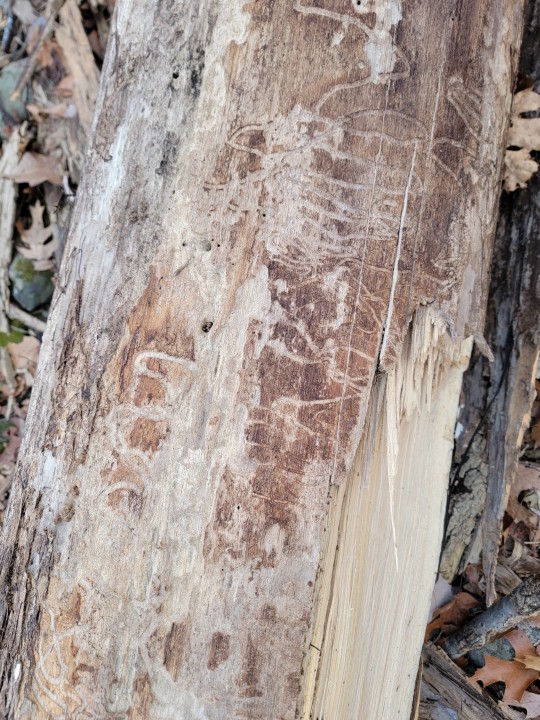



White Ash - Fraxinus pensylvanica
For this post I'm going to discuss the snags and reason I got back into ecology: The Ash Tree
Around the 1990s an insect from northeastern Asia was accidentally introduced to the Continental United States, by 2002 this insect was identified in Michigan after destroying several million acres of forest, this insect was the Emerald Ash Borer. The borer's larvae consume the living inner bark layer (leaving an interesting pattern), ultimately starving the tree of nutrients. The bark will often flake or peel off. By the year 2015, there were signs that the borer had spread to the east coast, its journey likely accelerated by the spread of firewood from infected logs, by 2019 nearly every mature Ash tree in Northern New Jersey was killed.
I grew up in a yard with twelve 150 year old Ash trees, the yard was adjacent to a section of Ash dominant forest, I watched the slow decline of all these trees, for half a decade I hoped our trees would be lucky enough to survive but unfortunately they all died within a few summers. Although the White Ash trees I encountered were wild from a 20th century clear-cut, they were a fairly common street tree around the northeast, straight growing, lovely bark and unfortunately most of the nursery stock was derived from a similar gene pool. There was little genetic diversity and many suburban neighborhoods were wiped of Ash trees. Many Ash trees were infested and look like the section of log I saved from my yard now (image below)

Suburban yards aside I quickly began to notice entire sections of forest filled with standing deadwood (image below). Worse yet white ash wasn't the only ash species affected, the entire genus is at risk. American Ash species often occupy a unique niche in cultivating young organisms which grow in vernal pools, the leaves of american ash are low in tannin, meaning they're one of the few leaves which are a suitable food source for young frog tadpoles. The loss of the ash means damage to American frog populations. It also means insects which utilized ash as a host are also at risk.
Ash also has quite a lovely ethnobotanical history, black ash is famous amoung various tribes around the northeast for its use in basket weaving. Historically Lenape elders would use the juice from white ash leaves for reducing swelling. More modern settler usages revolve around using the elastic yet study wood for baseball bats, oars, hockey sticks, and tool handles. My friends father used to raid his boss's construction sites at night to harvest ash slated for removal and deliver it to a baseball bat manufacturer for a decent payout. Ash also has a lovely grain visible in the broken log in the second image
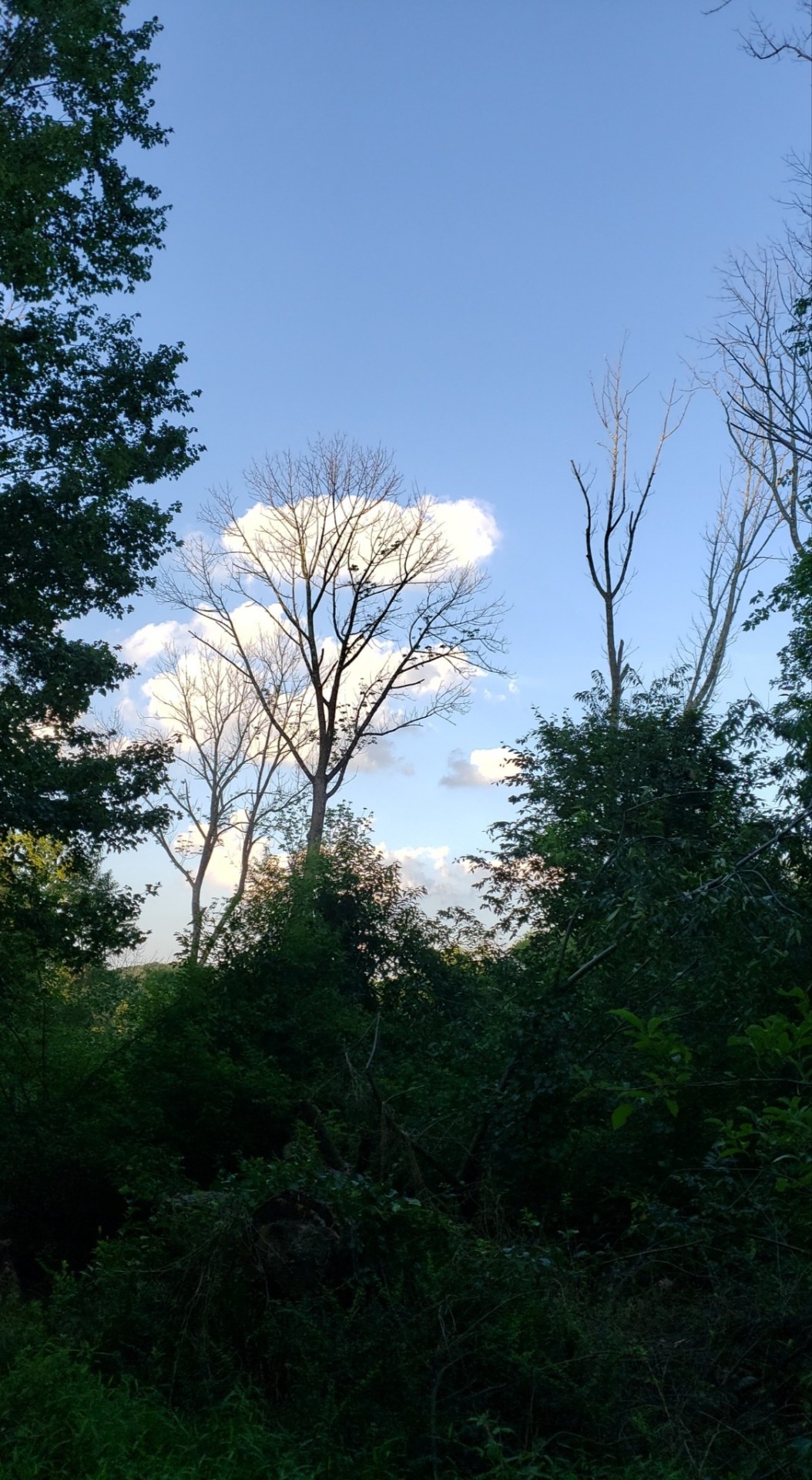
Ash forests now eerie snag filled openings which creak and occasionally fall on unsuspecting hikers. The thought of watching an entire forest ecosystem go really bothered me, ash swamps are unique, varied, there's something almost indescribable about growing up hearing early spring chirps from little tree frogs at night which are now silent. I left my job in architecture and started pursuing a degree related to landscape architecture and ecological planning (not that this is the answer). I started propagating ash trees where I could and planting them around. Unfortunately ash can't immediately return, invasive species often outcompete ash trees in their former forest, the added pressure ultimately reduces their ability to regenerate. The borer has spread so far there is little we can do to remove it, however there is a positive effect with biological control via the borers' specific parasitic wasp.
Is this the end of the ash? Hopefully not. I still find saplings throughout the woods, ash can be aggressive in the right conditions, can they survive into maturity is another question. Perhaps in another century, more will return, and ash will occupy our woods once more. Like the Chestnut work is being done to breed more resistant species.
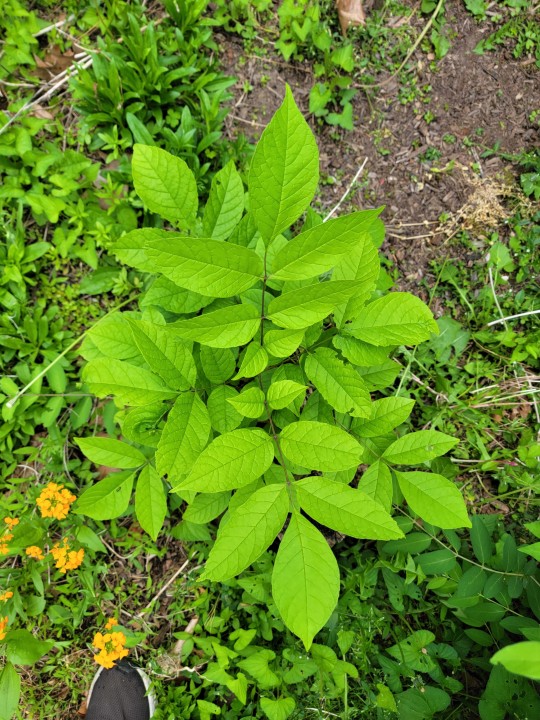
10 notes
·
View notes
Photo
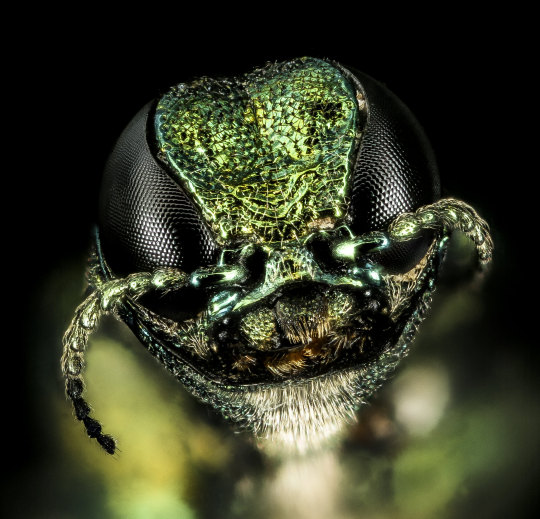
Destroyer of Ash, this is #Agrilus planipennis an invasive #Buprestid that has invaded North America where it feeds on Ash trees. Beautiful and sad at the same time.
95 notes
·
View notes
Text
little creature of the day: Emerald ash borer
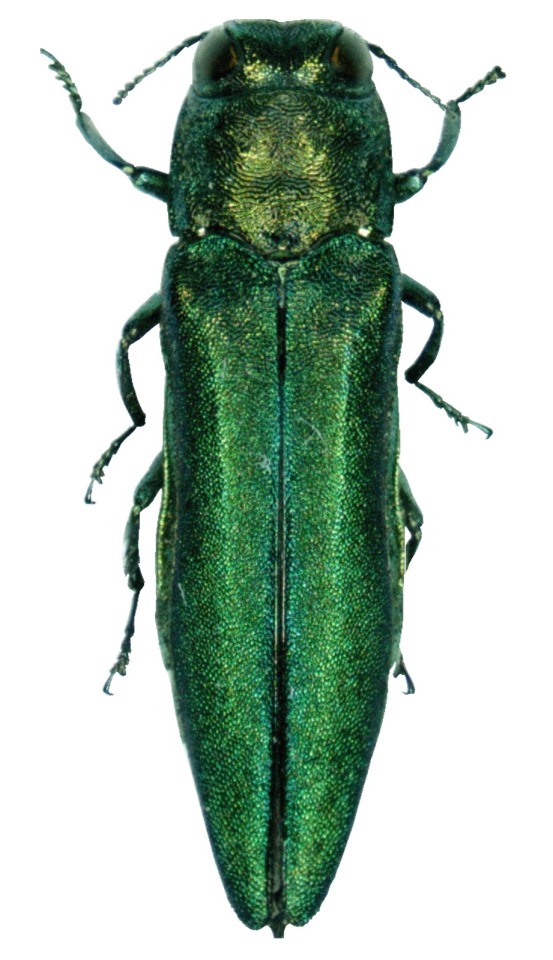
they look bedazzled
image source
5 notes
·
View notes
Text
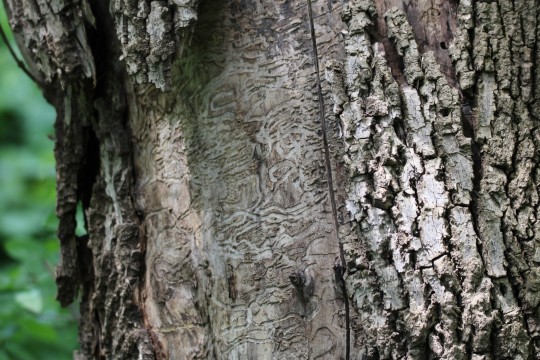
Emerald ash borer gallery (signs) on an ash tree. This species is highly invasive and destructive in North America. 5/22/24
#emerald ash borer#mine#invasive species#insects#invertebrate#invertebrates#bugs#insect#animal tracking#animal tracks#nature#wildlife#naturalist#nature photography#photography#ecology#north america#animals#ecologist#wildlife biology#wildlife biologist#biologist
6 notes
·
View notes
Photo
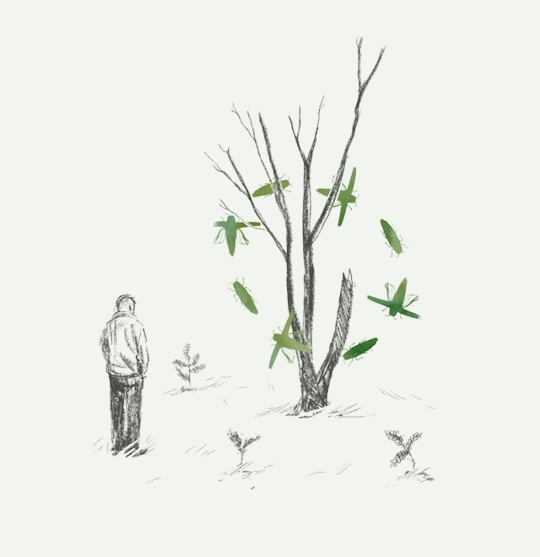
the Emerald Ash Borer is an invasive beetle species that has been decimating ash trees in Eastern North America for the past 20 years. Living in upstate New York, I personally see how it affects our forests, wildlife, and communities. Our forests look like kindling, and falling dead ash limbs are a huge safety hazard.
Its is considered to be the most destructive pest in North America, and millions of trees are left dead.
Please look to see if the Emerald Ash Borer is native to your state, and what measures you can take to protect our wildlife and biodiversity. Consider planting ash saplings, as the beetles only eat mature trees!! This way we can ensure future generations of ash trees once the beetles die out.
Read more about the Emerald Ash Borer here:
http://www.emeraldashborer.info/
26 notes
·
View notes
Link
June 28, 2022
The Canadian Council on Invasive Species (CCIS) gave a short presentation of the top 10 invasive species already in Canada or that could come to Canada from south of our border and that we therefore should be on the alert for.
The top 10 invasive species were as follows:
Asian long-horned beetle, Anoplophora glabripennis
Spotted lanternfly, Lycorma delicatula
Asian giant hornet, Vespa mandarinia
Emerald ash borer, Agrilus planipennis
Hemlock woolly adelgid, Adelges tsugae
Brown marmorated stink bug, Halyomorpha halys
Dutch elm disease, Ophiostoma ulmi and Ophiostoma novo-ulmi
Japanese beetle, Popillia japonica
Spongy moth (also LDD moth; previously gypsy moth), Lymantria dispar dispar
Lily leaf beetle, Lilioceris lilii
I have definitely seen at least three of these species and/or the damage they have done, specifically 4, 8, and 9.
You can help by reporting these species through, for example, iNaturalist. CCIS has their own project on iNaturalist, titled “I Spy and Identify Invasives / Je vois, J’identifie les espèces envahissantes”, which you can join: https://www.inaturalist.org/projects/i-spy-and-identify-invasives-je-vois-j-identifie-les-especes-envahissantes. The CCIS also has a whole webpage on how and where to report: https://canadainvasives.ca/take-action/report/.
#wildflowers of southern ontario#invasive species#canada#Canadian Council on Invasive Species#inaturalist#Asian long-horned beetle#Anoplophora glabripennis#Spotted lanternfly#Lycorma delicatula#Asian giant hornet#Vespa mandarinia#Emerald ash borer#Agrilus planipennis#Hemlock woolly adelgid#Adelges tsugae#Brown marmorated stink bug#Halyomorpha halys#Dutch elm disease#Ophiostoma ulmi#Ophiostoma novo-ulmi#Japanese beetle#Popillia japonica#Spongy moth#LDD moth#Lymantria dispar#Lymantria dispar dispar#Lily leaf beetle#Lilioceris lilii
12 notes
·
View notes
Text
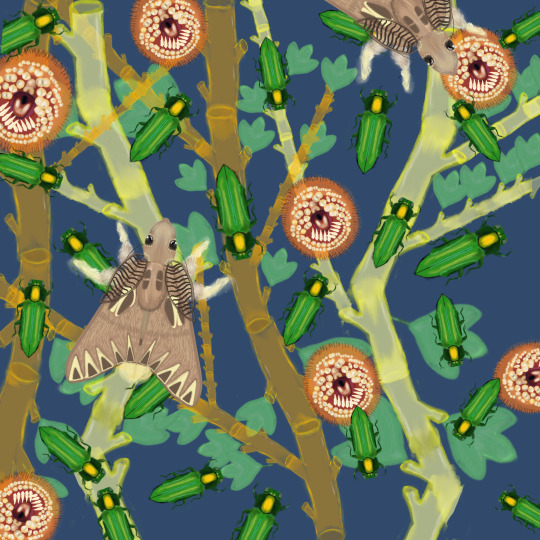
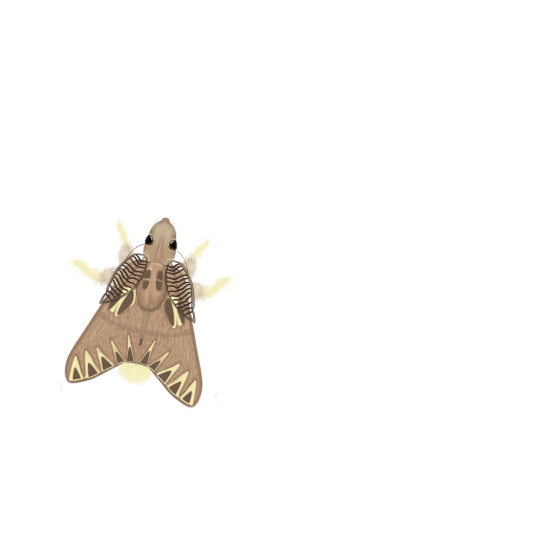


#digital art#darktober#darktober2022#day six#infestation#day six: infestation#invasive species#or approximations of#sponge moth#emerald ash borer#wallpaper#tw teeth#tw insects#lamprey#vase tunicate#tunicate#still so rushed but technically done before midnight
2 notes
·
View notes
Photo

the destruction we left behind // emerald ash borer
#moodboard#aesthetic#green#white#yellow-green#monochrome#invertebrate#insect#bug#beetle#emerald ash borer#plant#nature#kudzu#the vine that ate the south#invasive species
3 notes
·
View notes
Text

We interrupt your regularly scheduled fat birds for a PSA about the emerald ash borer, which is...all over the fucking place here. Argh. Nature doesn't just abhor a vacuum, it also abhors monocultures, and people here went all in on planting ash trees for shade despite warnings. The one upside is we now have all the woodpeckers.
6 notes
·
View notes
Text
I'd like to check in with my mum & sister.
Flaky pastry, housepanthers, beer, asparagus, pea gravel, abiotic conditions, raised beds, and local economy.

View On WordPress
#249 Lindsay Road 40#ash trees#beer#cooperative gardening#cordless saws#dailyprompt#dailyprompt-1948#DeWalt#education#elderberry#emerald ash borer#Evolve Builders Group#Evolve_Builders#forestry#Gilles Lake#housepanthers#instant messaging#invasive species#isolated-work-site#Lion&039;s Head#lithium ion battery packs#Luscious Bakery#Miller Lake#native plants#Neustadt#Ontario asparagus#permaculture#raised garden beds#Sauble Beach#soil-production
0 notes
Text
Invasive tree-killing beetle likely in every Wisconsin county
By Danielle Kaeding– Wisconsin Public Radio
State forest health experts say it’s likely an invasive tree-killing beetle has spread to every county in Wisconsin — the insect already killing most ash trees in roughly one-third of the state.
The emerald ash borer originates from east Asia, and it was first found in Wisconsin in 2008. The pest has killed tens of millions of ash trees nationwide.…

View On WordPress
0 notes
Text
Spring Check up for Tree Care Should Include Emerald Ash Borer Inspection
Your trees have weathered the winter. With winter weather almost behind us and new buds popping up on trees, those trees may need special care to be their healthiest and most beautiful, particularly from emerald ash borer. The adult emerald ash borer (EAB) has been a significant and destructive pest in Pennsylvania for years. First discovered in the United States in 2002, the emerald ash borer has caused considerable damage to ash trees across the United States, affecting both the environment and the economy.
Because spring is the time that these adult beetles emerge and begin devouring the canopy of ash trees, we advise residents to be proactive and prepare to protect ash trees from this pest with a spring inspection of their trees.
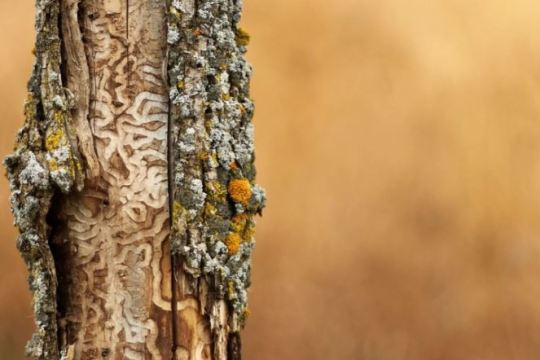
Tree Care Spring Checklist
Just like you do spring cleaning in your home, some tree maintenance should be done regularly for your trees to thrive. To help you keep your trees safe, here is a checklist of what to do to maintain the health and appearance of your trees from the impact of emerald ash borer.
Inspect Your Trees Thoroughly
The adult emerald ash borer emerges in spring, but you should be on the lookout for them all year, as larvae activity damage can be seen when the trees are bare in winter. Start from your driveway and look at the landscape as a whole. You may see trees that are growing irregularly, thin areas in the canopy, fungal growths, or other issues that might get missed by a daily casual glance.
Look For Signs of Emerald Ash Borer Activity
Generally, the first major sign that EAB has infested a tree is a thinning of leaves at the top of the tree. Unfortunately, if you see this symptom, your tree will likely have been under attack for some time already. Other signs to look for include the following:
Yellowing of leaves
Epicormic shoots
D-shaped exit holes
S-shaped galleries under the bark
Unusual woodpecker activity
Remove Debris & Tree Wrappings
Regular fall and winter seasons will cause leaves to cover the areas around the base of your trees. After the winter season we have just encountered, you may find larger branches that need to be removed. Rake or pick up leaves, twigs, or other debris around your trees.
Also, remove any protective wraps you have used during the winter and ensure that no roots or other items are wrapped around the trees. Leaving the tree constricted in any way can cause girdling, which cuts off the flow of nutrients and water and can weaken the tree trunk.
Add Fresh Mulch
In addition to giving a fresh look to your landscape, mulch can be a healthy addition. Adding a 3-inch layer of mulch around trees helps retain moisture and discourages weed growth. Be careful to avoid mulching too close to the tree. If mulch piles against the tree, fungi are more likely to develop, so make sure the mulch is all around the tree but just shy of touching the tree.
Trim and Prune
Though winter is the best time for pruning, trees may remain dormant in spring, allowing for late trimming and pruning. Remember that in Pennsylvania and Delaware, windy conditions and storms are common in the spring and summer, so thinning out branches will reduce the potential for weak branches to fall off and cause damage to surrounding property. Pruning trees and shrubs can help with overall air flow and also encourage healthy growth.
However, pruning requires the right knowledge and experience, as improper or incorrect cuts can lead to adverse outcomes, like over-pruning or improperly pruning, damaging the appearance or overall health of the trees. As a result, hiring a professional to do this type of pruning is recommended.
General Inspection Tips
In addition to our specific recommendations, here is some general advice when looking at your landscape in the spring.
Inspect all elements of your landscape to prepare for the summer.
Ensure irrigation systems are working properly and set to avoid spraying on trees susceptible to fungus.
Check for any damage that may have occurred. If tree limbs are weak, those branches may be susceptible to breakage, which could cause property damage. Damage to bark could also leave trees open to infection or insect infestation.
Look for the presence of fungus or other tree disease. Mushrooms growing on tree surfaces could indicate tree death, weakening the tree trunk and necessitating removal.
Call Stein Tree for Spring Tree Care and Emerald Ash Borer Inspection
Maintaining your landscape should be essential to your home spring cleaning routine. Stein Tree Service has provided excellent tree care, including tree removal, trimming and pruning, emerald ash borer inspection, and other services, to the residents of Delaware, Pennsylvania, and Maryland for over 40 years. We are also licensed to treat the emerald ash borer pest in Delaware and Pennsylvania. Contact us today for a free consultation or to learn about our services!
Blog is originally published at: https://www.steintree.com/spring-check-tree-care-include-emerald-ash-borer-inspection/
It is republished with the permission from the author.
0 notes
Text
Emerald Ash Borer: A Threat to Pennsylvania’s Ash Trees
In this third installment of our series on invasive species of insects, we will discuss the emerald ash borer (EAB). This invasive woodboring beetle has wreaked havoc on ash tree populations in Pennsylvania and other states in the United States and other regions in North America. As a homeowner, you should understand the impact of this invasive pest. Below, we discuss the characteristics, life cycle, and damage caused by emerald ash borer in Pennsylvania as well as some prevention and treatment methods.
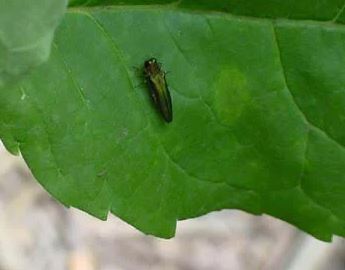
What Is the Emerald Ash Borer?
The emerald ash borer (Agrilus planipennis) is a small, metallic green species of beetle native to northeastern Asia that has become invasive to North America. The beetle was first discovered in the United States in 2002 in Michigan and has since spread to 30 states, including Pennsylvania. EAB attacks and kills ash trees in North America by feeding on their inner bark, disrupting the tree’s ability to transport water and nutrients.
Emerald Ash Borer Appearance
Adult EAB are distinguished by their bright metallic green color and are approximately 1/3 of an inch (8.5 mm) long and about 1/16 of an inch (1.6 mm) wide. Females are also slightly larger than males. The elytra (hard shells that serve as protective cases for wings) are typically a darker green but can also have copper hues. Another distinguishing feature of the adult emerald ash borer species is its bright red upper abdomen that can be seen when the wings and elytra spread.
Larvae are white to cream-colored with 10 abdominal segments. The last segment has a pair of brown, pincer-like appendages. Larvae typically reach a length of 1 to 1¼ inches.
Emerald Ash Borer Life Cycle
The emerald ash borer has a 1-year life cycle. Adult beetles emerge through D-shaped exit holes in a tree around late May and early June—adult activity peaks between mid-June and early July. After appearing, the adult beetles feed on ash foliage for several days and then begin to mate. Females lay approximately 60-90 eggs in their lifespan, which hatch in 7 to 10 days.
After hatching, the larvae tunnel through the bark into the ash tree’s phloem (plant tissue). Larvae feed on phloem for several weeks, creating S-shaped paths in the tree under the bark. As larvae grow, these galleries become progressively wider. Prepupal larvae overwinter in shallow chambers within the bark. Pupation begins in late April or early May and lasts 1 to 2 weeks when this species’ life cycle starts again.
Signs and Symptoms
If you have ash trees on your property, knowing the signs and symptoms of EAB infestation is crucial to keeping them safe and preventing damage. These signs include the following:
Thinning canopy and dieback of branches
D-shaped exit holes in the ash tree bark
S-shaped galleries under the bark
Increased woodpecker activity (as woodpeckers feed on larvae)
Damage from Emerald Ash Borer
As mentioned above, EAB larvae feed on the nutrient-rich inner phloem, cambium, and outer xylem beneath the bark, creating S-shaped galleries packed with sawdust-like frass. As the infestation of this invasive species progresses, the symptoms mentioned above become more apparent. Trees will die after 3 to 4 years of heavy infestation, making EAB control tactics crucial to preserving ash tree populations.
Preventing Emerald Ash Borer Infestation
Prevention is the best way to avoid damage, and there are several steps you can take to protect your ash trees from EAB:
Do not move firewood: Moving firewood can inadvertently transport EAB to new locations. Some states, including Pennsylvania, have restrictions on moving firewood because of invasive insect species. Always buy firewood locally and burn on-site.
Use insecticides: Preventive insecticides containing certain ingredients and agents can be applied to healthy ash trees to protect them from EAB. Consult a certified arborist for advice on the appropriate insecticides and application methods.
Plant diverse tree species: Planting a variety of tree species can help reduce the impact of EAB on your property and promote a healthier ecosystem.
Damage from Emerald Ash Borer
As mentioned above, EAB larvae feed on the nutrient-rich inner phloem, cambium, and outer xylem beneath the bark, creating S-shaped galleries packed with sawdust-like frass. As the infestation of this invasive species progresses, the symptoms mentioned above become more apparent. Trees will die after 3 to 4 years of heavy infestation, making EAB control tactics crucial to preserving ash tree populations.
Treating EAB Infestation
If your ash trees are already infested with EAB, Burkholder PHC offers various treatment options, including:
Insecticide: Treatments can be applied to infested trees to kill EAB larvae and prevent further damage. Some application options include soil drenches, soil injections, or stem injections.
Tree Removal: In some cases, infested trees may need to be removed to prevent the spread of EAB to nearby healthy trees.
Replacement Planting: After removing infested trees, consider planting a diverse selection of tree species to help restore the ecosystem.
Contact Burkholder PHC for Emerald Ash Borer Treatment in Your Landscape
If you suspect or are concerned about emerald ash borer impacting your property, contact Burkholder PHC for expert advice and treatment options. We provide a free evaluation by our highly experienced, qualified plant health care experts and certified arborists to help remove and control invasive species and the adverse effects these pests cause. Contact Burkholder PHC today for a free consultation or more emerald ash borer information.
Blog is originally published at: https://www.burkholderphc.com/emerald-ash-borer-a-threat-to-pennsylvanias-ash-trees/
It is republished with the permission from the author.
0 notes
Text
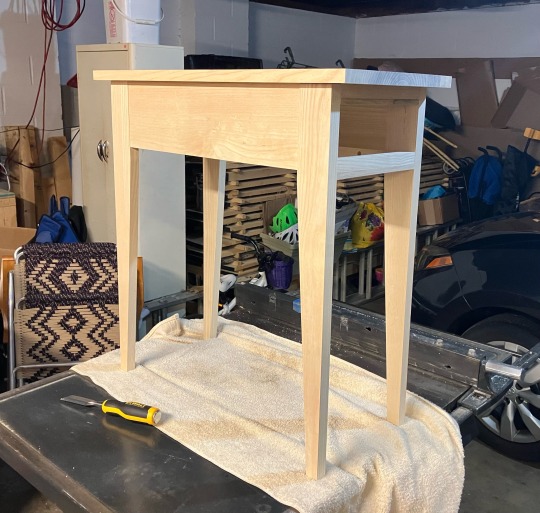
End table WIP
#long and narrow to fit between the end of a couch and the wall#just need to route the top and make the drawer#thankfully this will be going in a corner so all the mistakes are less visible#woodworking#end table#end tables#white ash#99% of the wood used was milled from trees that were cut down around the house#emerald ash borer#borers got to them so they had to come down
1 note
·
View note
Text

Is this ash borer damage? These fuckers won't even leave the saplings alone, will they?
0 notes